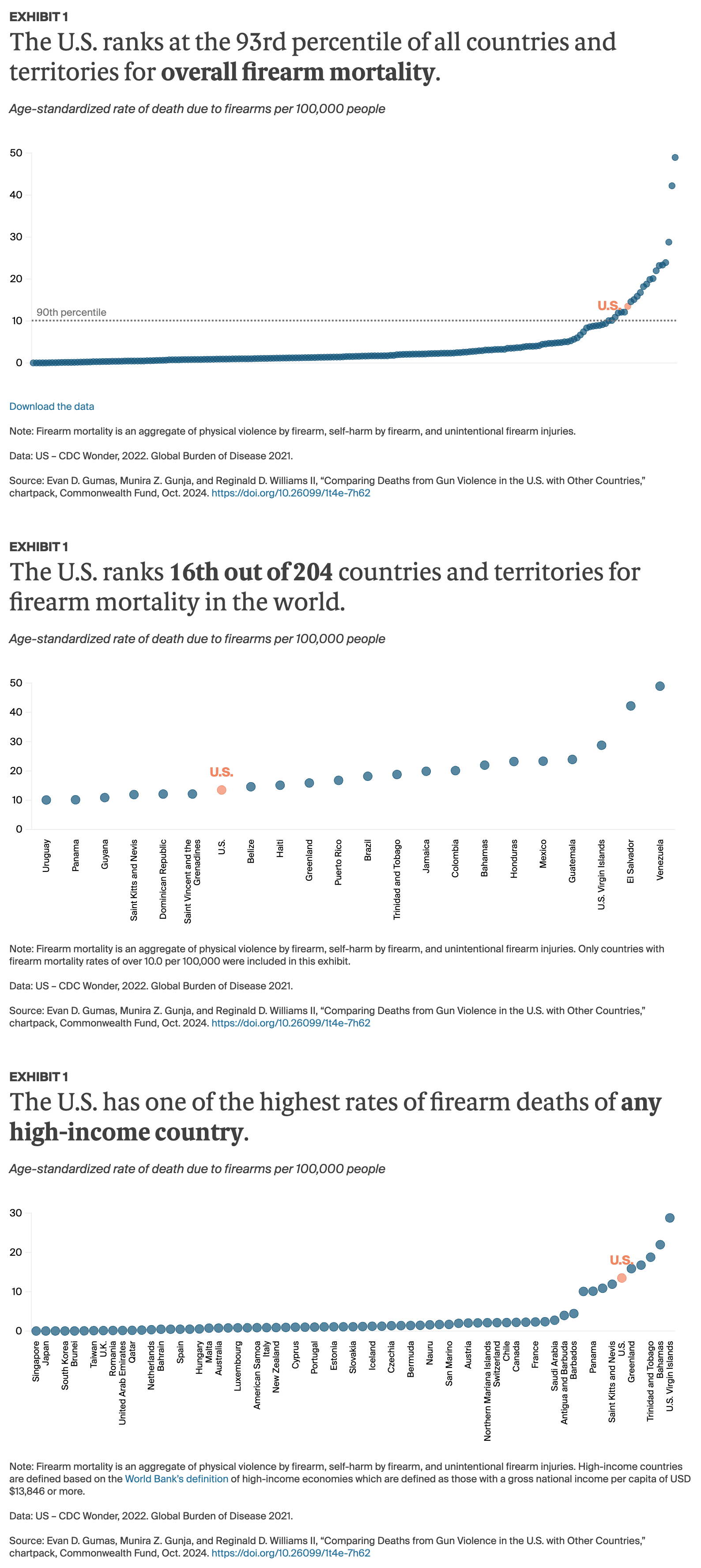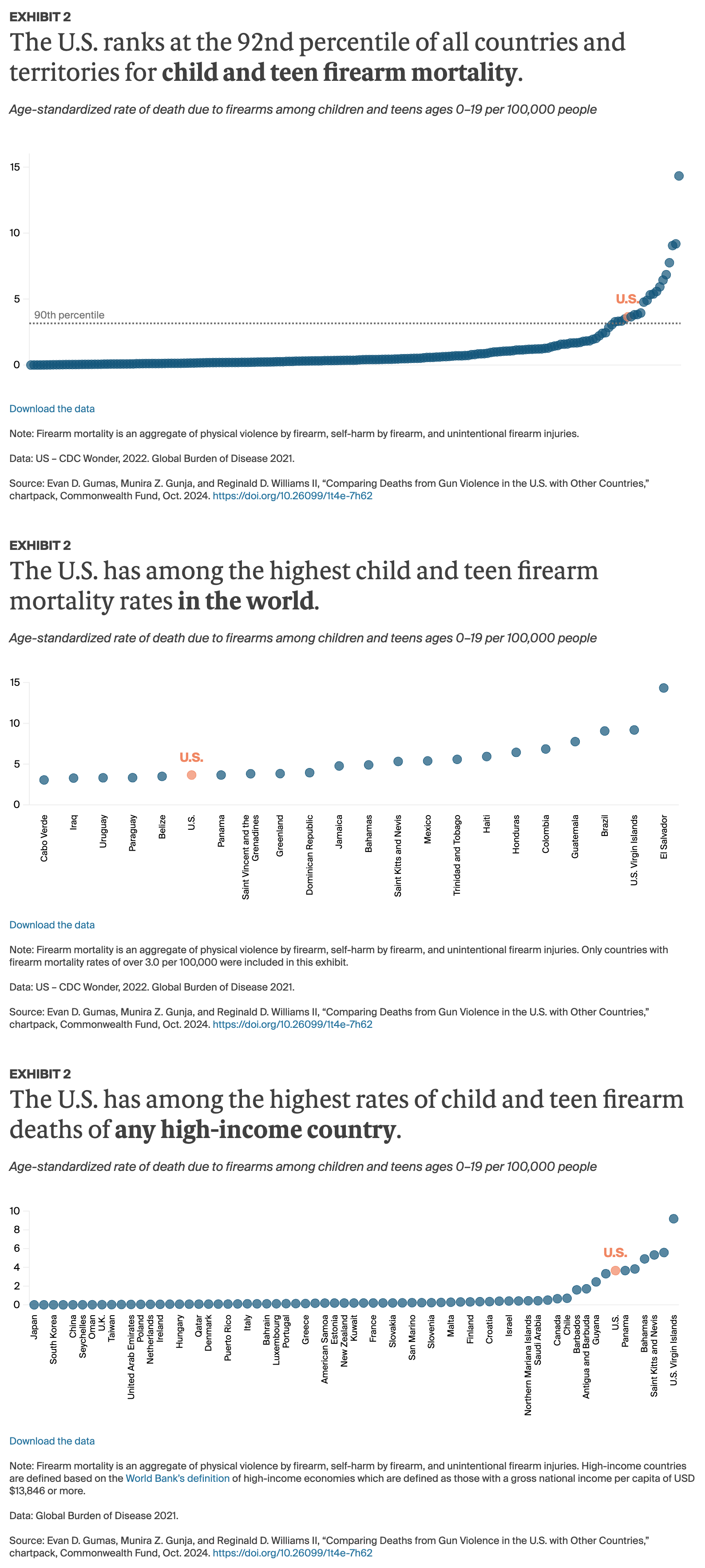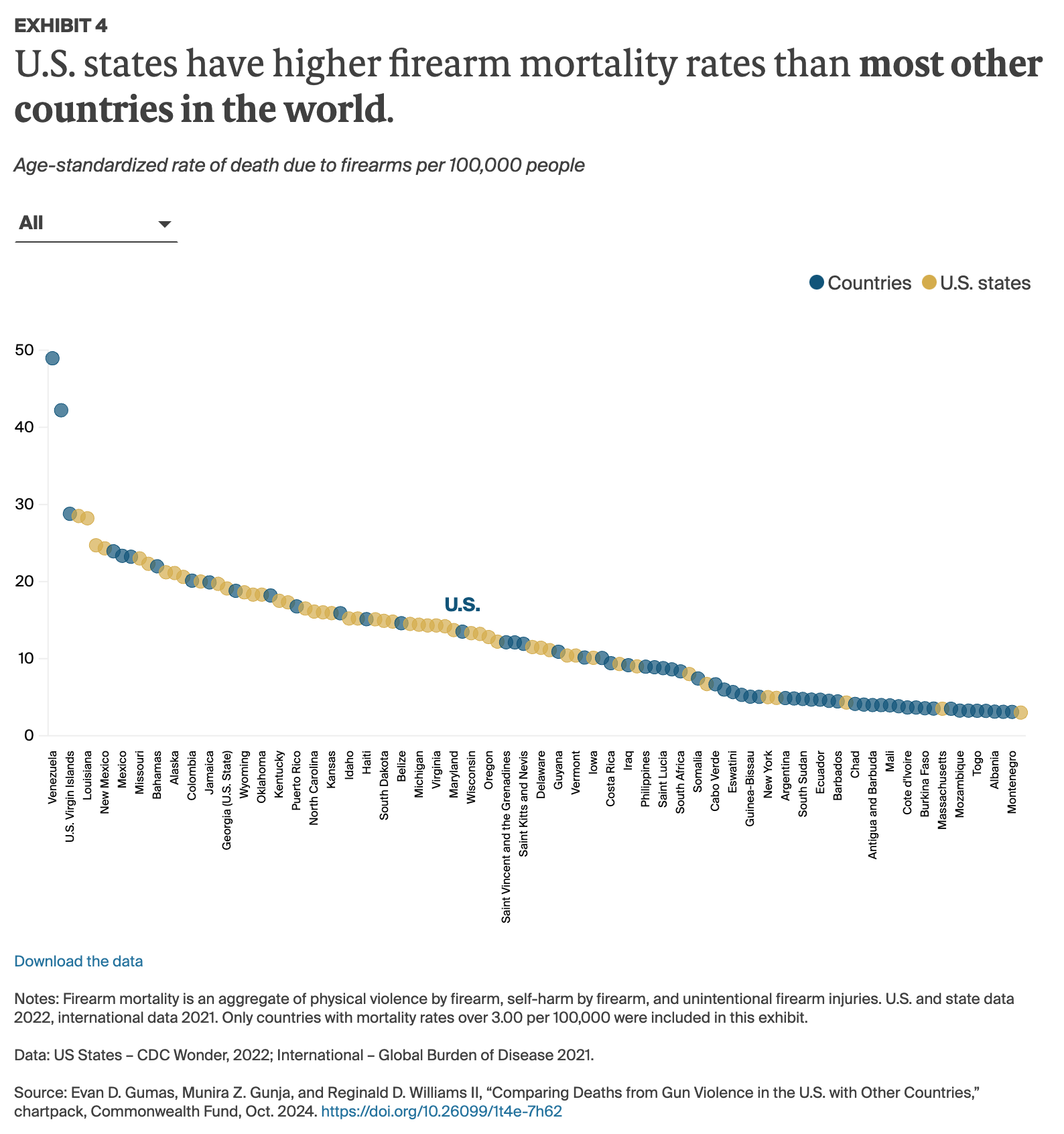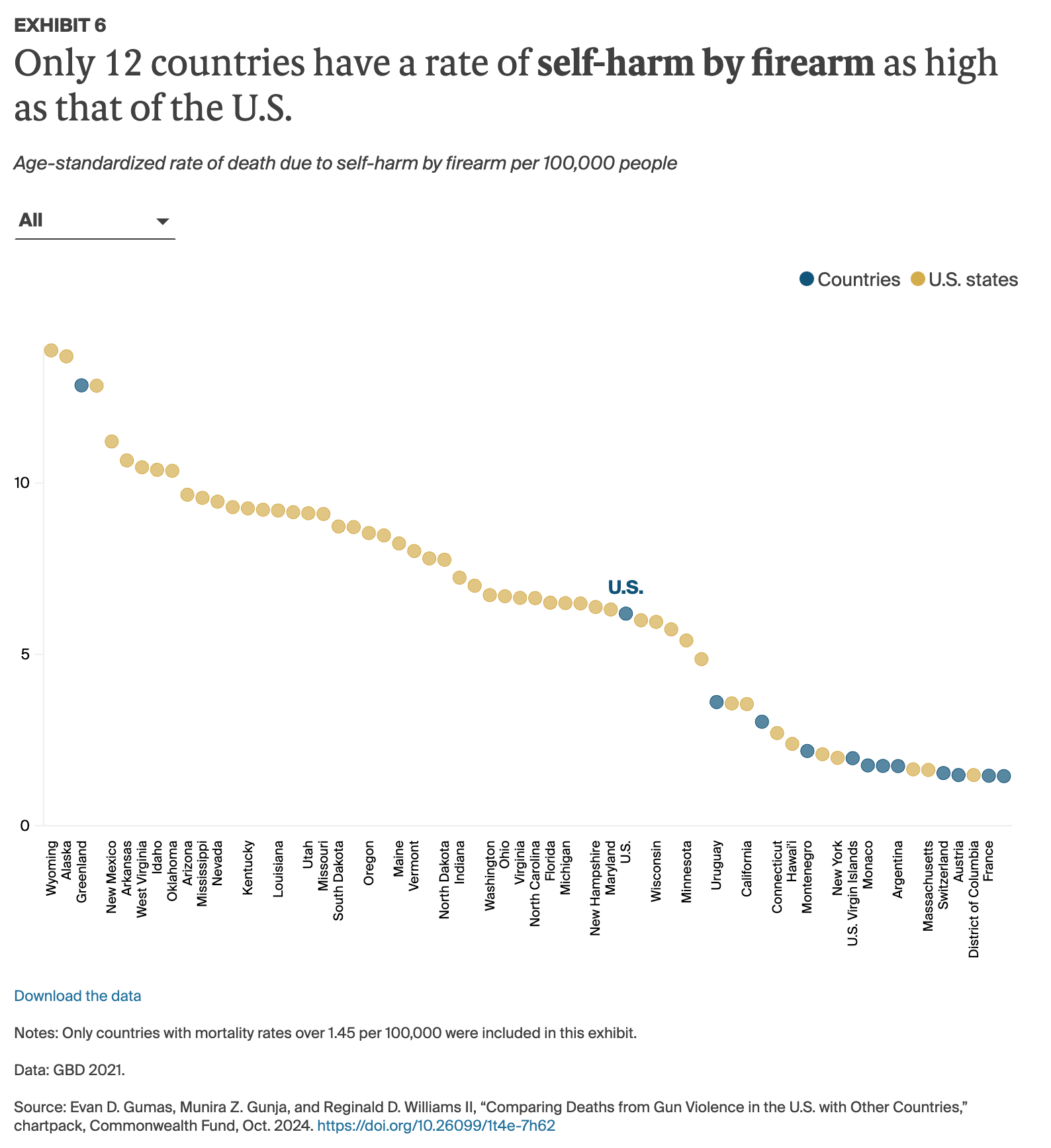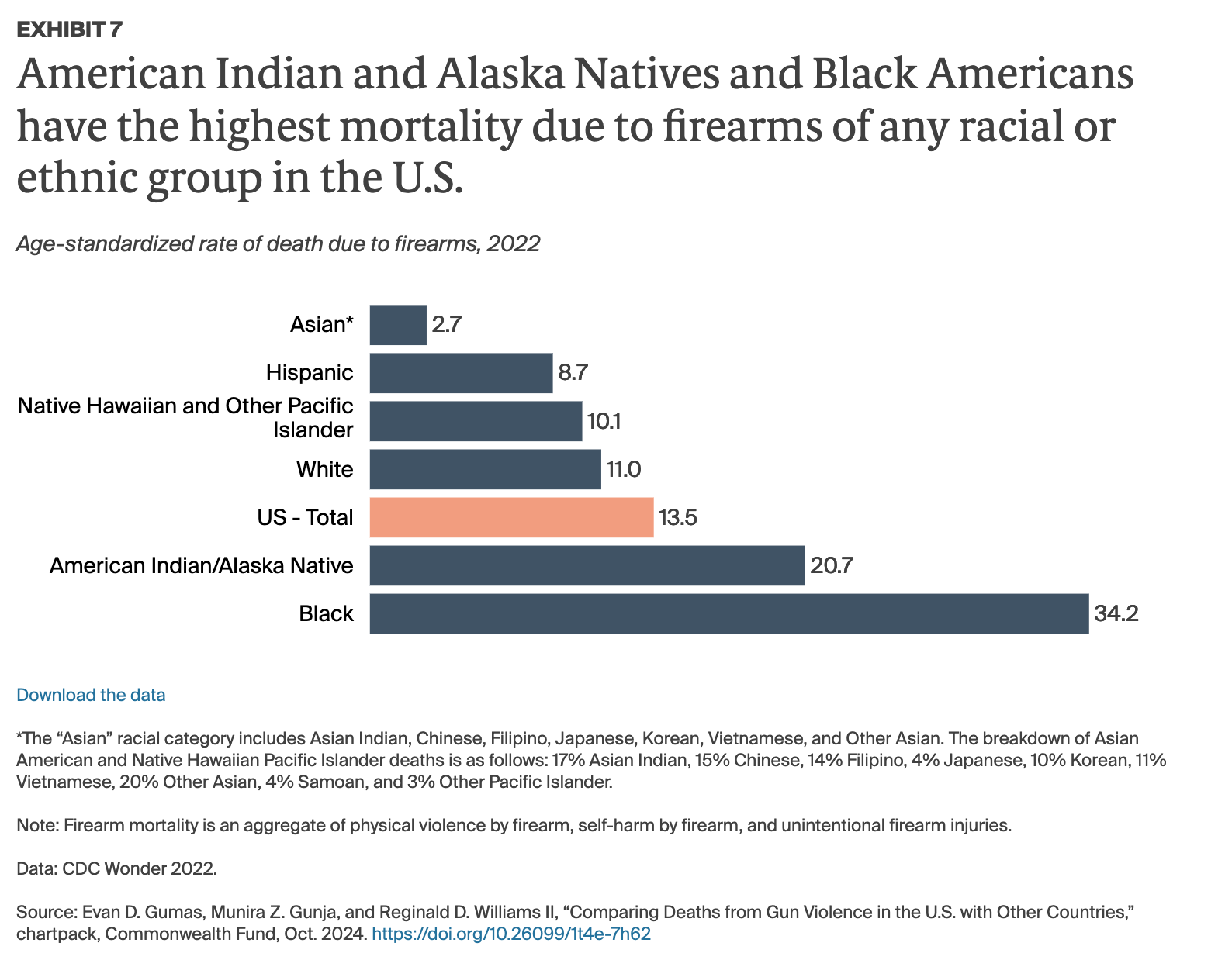With far more people dying of gun-related causes annually in the United States than in other high-income countries, U.S. Surgeon General Vivek Murthy, M.D., officially declared firearm violence a public health crisis on June 25, 2024. In his advisory, Murthy noted that over half of U.S. adults have either experienced gun-related violence themselves or have a family member who has. Firearms are the leading cause of death for children in the U.S. and are the weapons used most often in domestic violence against women.
Leading up to the surgeon general’s 2024 declaration, there had already been 248 U.S. mass shootings — incidents where four or more people were shot or killed, excluding the shooter — in just a six-month period. In the preceding year, there were more than 650 mass shootings and more than 43,000 deaths linked to firearms. Mass shootings, despite the publicity they receive, account for fewer than 2 percent of all gun deaths in the U.S.
Gun deaths, which are largely preventable, contribute significantly to rising rates of preventable mortality and continue to drive down U.S. life expectancy. While data limitations make it difficult to calculate accurate numbers of firearm-related injuries, studies suggest the number of firearm-related injuries is roughly double the number of reported deaths each year.
By some estimates, firearm violence cost the U.S. around $557 billion in 2022, with $2.8 billion spent on health care costs, mental health services, and emergency services. The largest proportion of this total was made up of costs related to quality-of-life, pain and well-being lost by those injured or killed, and costs to families. Combined with billions in other losses, firearm deaths cost roughly $274,000 per victim and each injury costs over $25,000 per patient, equaling an average cost of $1,700 per taxpayer annually.
Previously the Commonwealth Fund compared firearm mortality in the U.S. with other high-income countries, showing consistently higher U.S. rates. In the following charts, we also look at countries whose firearm mortality rates are more comparable to U.S. rates. The first three exhibits show how the U.S. compares: 1) across all countries and territories around the world; 2) across a subset of countries with a similar firearm mortality rate; and 3) across high-income countries only. We also show how firearm deaths in U.S. states compare to other countries. Data come from the Institute for Health Metrics and Evaluation’s Global Burden of Disease study, and the Centers for Disease Control and Prevention’s WONDER database (see “How We Conducted This Study” for details).

